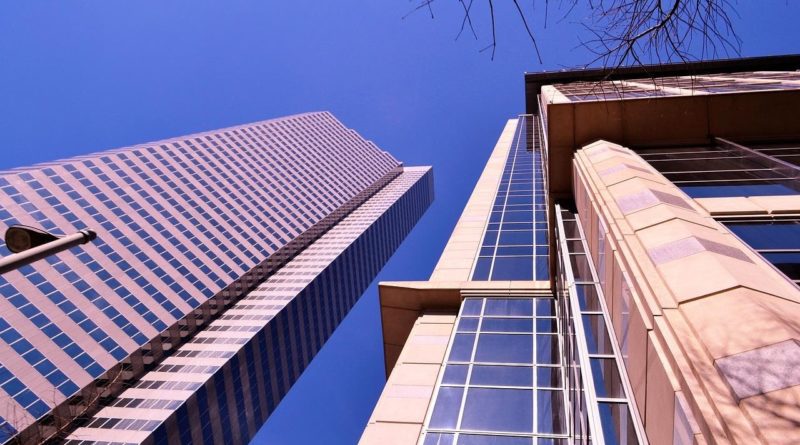Tips to Make Earthquake Resistance Buildings
Table of Contents
What is an Earthquake?
Land that we possess is framed of a hard skin of light rocks coasting on the delicate focal point of the Earth, which is made of heavier molten stone and molten iron. This hard skin isn’t one strong piece yet is comprised of lumps, isolated by issues and trenches, or squeezed together into mountains.
These different plates and lumps are not static but rather are moved in moderate movement by convection powers in the liquid center, gravitational forces from the Sun and Moon, and outward powers from the Earth’s revolution.
What Makes a Building Fail in Earthquakes?
An Earthquake moves the ground. It tends to be one unexpected development, however more regularly, it is a progression of stun waves at short interims, similar to our waves from the rock in the lake relationship above. It can move the ground up and down, and it can move it from side to side.
All structures can take care of their weight (or they would tumble down at any rate without anyone else). They can, as a rule, convey a touch of the day off a couple of other floor stacks and suspended loads too, vertically; so even severely manufactured structures and buildings can oppose some up-and-down loads.
How Earthquakes Impact Buildings
Before we take a look at the highlights, it’s critical to see how seismic tremors impact human-made structures. At the point when an earthquake happens, it sends shockwaves all through the ground in short, fast interims in every single, distinctive direction. While structures are commonly prepared to deal with vertical powers from their weight and gravity, they can’t deal with side-to-side forces discharged by tremors.
This lateral load vibrates dividers, floors, sections, bars, and the connectors that hold them together. The distinction in development between the base and top of structures applies excessive pressure, making the supporting edge burst and the whole structure to fall.
Earthquake-resistant building plan considers the following characteristics that control their structural integrity:
1. Stiffness and Strength
When planning safe earthquake structures, wellbeing experts suggest satisfactory vertical and sidelong stiffness and strength – explicitly lateral. Structures will, in general, handle the vertical development brought about by shakes superior to the horizontal, or lateral, movement. Without thinking about quakes, experts, despite everything, center around a structure’s vertical stiffness and strength as it needs to help itself. In any case, earthquakes present new directional powers that may not be set up for. Structures will move left and right during the occasion, and, if not fabricated appropriately, will rapidly destabilize.
2. Regularity
This feature alludes to the movement of the structure when pushed in sidelong ways. Security experts and building planners need the structure to move similarly to disperse the vitality without putting an excess of power on some side. On the off chance that a structure is unpredictable; at that point, shortcomings will become evident when the structure influences. The deficiency will compromise, and the structure will see concentrated harm – which compromises the structure all in all.
3. Foundations
A steady foundation is a significant quality of building an enormous structure paying little heed to cataclysmic event dangers. It is essential for a structure’s long haul endurance, and a more grounded foundation is vital to oppose seismic tremor’s incredible powers. Various zones have one of a kind central attributes that characterize how a structure’s base should be fortified. Experts need to see how the ground responds and moves before building intently. Structures intended to withstand brutal earthquakes have a profound foundation and driven heaps. For extraordinary balance measures, the foundation is associated, so they move as a unit.
4. Redundancy
Perhaps one of the most significant securities attributes when planning for wellbeing, redundancy guarantees there are numerous methodologies set up on the off chance that one falls. These can conceivably add to the structure cost, yet redundancies demonstrate their value if/when a cataclysmic event, for example, an earthquake happens. Security experts prompt similarly dispersing mass and strength all through the structure, so durability isn’t exclusively dependent on one factor.
How to Make a Building Earthquake-Proof
To plan a seismic tremor proof building, engineers need to fortify the structure and balance a quake’s forces. Since quakes discharge vitality that pushes on a structure from one heading, the procedure is to have the structure drive the opposite way. Here are some of the strategies used to assist structures withstanding seismic tremors.
1. Create a Flexible Foundation
One approach to oppose ground forces is to “lift” the structure’s foundation over the Earth. Base segregation includes developing a structure on adaptable cushions made of steel, elastic, and lead. At the point when the base moves during the seismic tremor, the isolators vibrate, but the structure itself stays consistent. This adequately assists with engrossing seismic waves and keeps them from traveling through a metal building.
2. Counter Forces with Damping
You may know that vehicles have shock absorbers. Nonetheless, you probably won’t realize that engineers likewise use them for making quake safe structures. Like their utilization in vehicles, shock absorbers decrease the size of shockwaves and assist structures with easing back down. This is practiced in two different ways: vibration control gadgets and pendulum dampers.
3. Shield Buildings from Vibrations
Rather than simply checking forces, specialists are trying different things with ways structures can deflect and reroute the vitality from quakes inside and out. Named the “seismic imperceptibility shroud,” this advancement includes making a shroud of 100 concentric plastic and solid rings in and covering it, in any event, three feet underneath the foundation of the structure.
As seismic waves enter the rings, they are compelled to travel through to the external rings for simpler travel. Therefore, they are basically directed away from the structure and scattered into the plates in the ground.
4. Reinforce the Building’s Structure
Withstand against breakdown; structures need to redistribute the forces that move through them during a seismic occasion. Shear dividers, cross braces, diaphragms, and moment opposing frames are fundamental to reinforcing a structure.
Shear walls are a valuable structure innovation that assists with moving quake forces. Made by boards, these walls help a structure keep its shape during development. Askew cross supports frequently bolster shear dividers. These steel shafts can support pressure and strain, which assists with balancing the weight and push powers back to the foundation.



